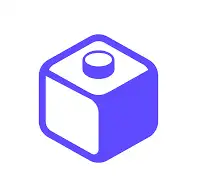Bubble: Empowering creators with no-code innovation
Bubble has emerged as a frontrunner in the no-code development space, offering a comprehensive visual programming platform that enables users to build fully functional web applications without writing a single line of code. Unlike basic website builders, Bubble is aimed at those who want to develop complex logic, dynamic databases, responsive designs, and scalable applications—whether they're startups testing MVPs or enterprises prototyping internal tools. The platform bridges the gap between visual design and backend functionality, redefining what non-technical users can accomplish.
Features and functionality
At its core, Bubble uses a drag-and-drop interface that allows users to construct responsive web layouts and define user interactions with workflows. Behind every element—be it a button, form, or input field—users can configure powerful logic that dictates how the app behaves. Bubble supports conditional logic, API integrations, custom states, and data manipulation with surprising depth.
The database editor lets creators define custom data types, assign privacy rules, and manage relationships between data points. It’s especially useful for creating complex applications like marketplaces, CRMs, booking systems, or social networks. Additionally, Bubble supports user authentication, making it easy to add logins, roles, and permissions. For advanced functionality, Bubble includes plugin support and the ability to run JavaScript through the Toolbox plugin.
User experience and interface
One of Bubble’s standout traits is its highly intuitive interface, though the initial learning curve can be steep for complete beginners. Unlike linear web builders, Bubble offers immense flexibility, which can be both liberating and overwhelming. However, for users familiar with Excel-style logic or flowcharts, the system feels natural over time.
The visual editor provides pixel-level control over placement, responsiveness settings for mobile and desktop, and an inspector panel to fine-tune every property of an element. Bubble also allows app previews in real-time, making it easy to iterate and test. The workflow editor is especially robust, letting users chain actions, create triggers, and manipulate app states with drag-and-drop simplicity.
Performance and scalability
Bubble applications are hosted on AWS infrastructure, which gives them a solid foundation in terms of reliability and security. That said, performance can vary depending on the complexity of the application and the efficiency of its workflows. Bubble offers optimization guidelines and server capacity upgrades to help improve performance for high-traffic applications. For startups or solopreneurs just getting started, the default performance tier is generally sufficient.
Scalability is one of Bubble’s strongest selling points. Unlike most no-code platforms that hit functionality ceilings quickly, Bubble continues to support app growth. It provides options for version control, custom domains, SSL certificates, and even deployment environments for production and development. For those seeking even more control, Bubble offers a professional tier with reserved capacity and priority support.
Integrations and ecosystem
Bubble integrates with thousands of external tools via API, including Stripe, Zapier, Airtable, SendGrid, and more. Users can create their own API connections using the built-in API connector, which simplifies the process of sending and receiving data between systems. For e-commerce, SaaS, or membership sites, this integration flexibility is a major advantage.
The Bubble ecosystem includes a rich plugin marketplace, community-built templates, and a vibrant forum. Many developers and entrepreneurs have contributed reusable components, pre-built layouts, and workflows that save time and effort. Bubble also offers a robust learning hub with tutorials, video courses, and community events to support users at every level.
Pricing and value
Bubble's pricing model is tiered, ranging from a free plan ideal for experimentation to professional plans suited for scaling apps. The free tier offers basic functionality with Bubble branding and limited server capacity. As users upgrade, they gain access to custom domains, enhanced database storage, advanced collaboration features, and API workflows.
Considering the cost of hiring a full-stack developer or assembling a dev team, Bubble provides significant value for money. It enables solopreneurs and small teams to move quickly from idea to launch without draining resources. However, users should be prepared to invest time learning the platform to truly unlock its potential.
Bottom line
Bubble stands out in the crowded no-code landscape by offering unmatched flexibility, depth, and scalability. While it may require a steeper learning curve compared to drag-and-drop site builders, the reward is a fully functional web application with nearly unlimited logic and customization. It empowers creators, founders, and teams to take control of the development process, reducing dependency on traditional engineering resources. Whether you're validating an idea, building a SaaS MVP, or launching a full-scale product, Bubble proves that coding is no longer a prerequisite for innovation.







